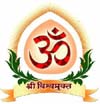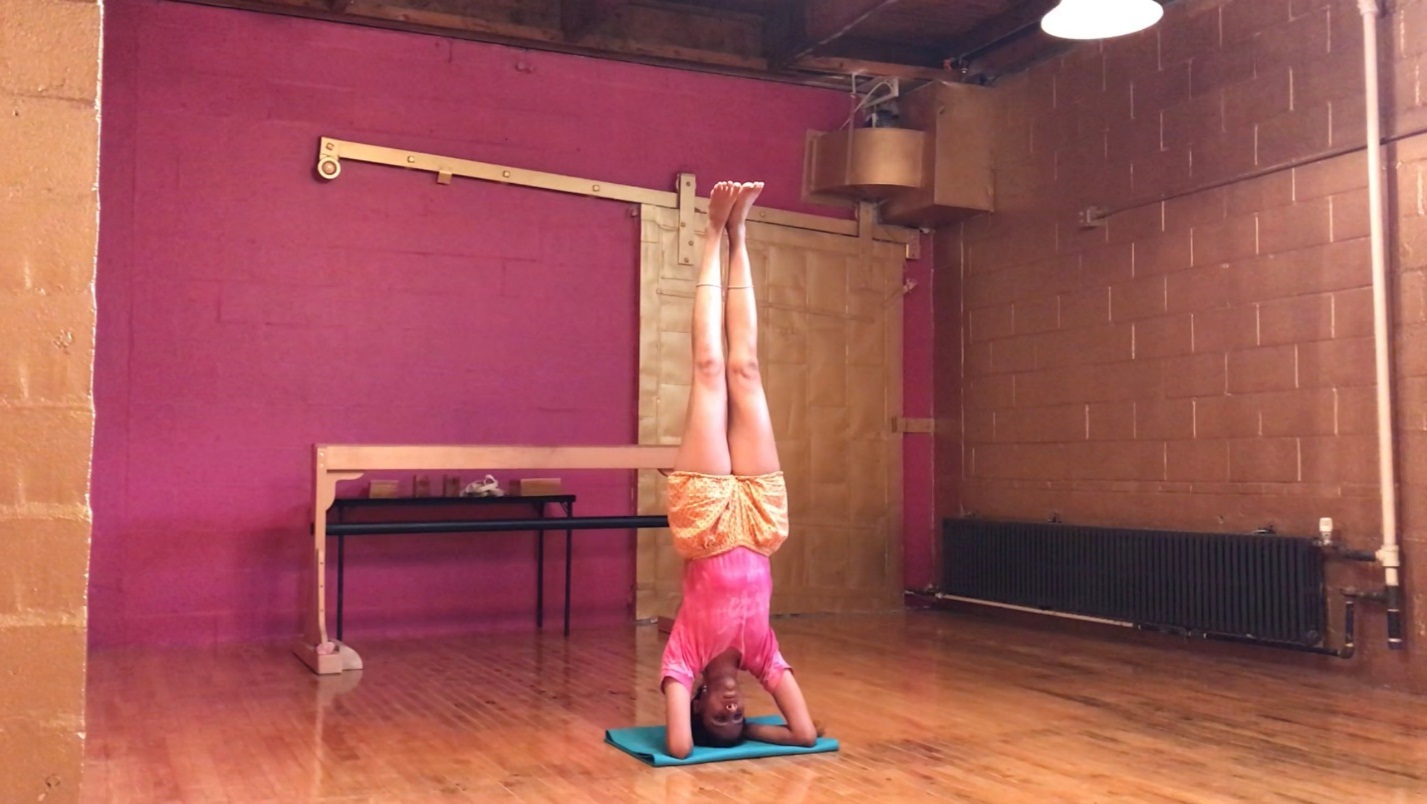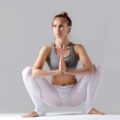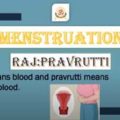Sirsasana and Sarvangasana – Benefits and Variations
King of all asanas is Sirsasana.
Sirsasana
Sir = head, Asana = posture.
Sarvangasana
Sarvang = entire body, Asana = posture
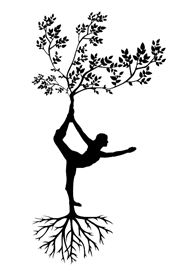
Ayurveda perspective:
“URDHWA MOOLAM ADHA SHAKHAM” |
(Bhagavat Geeta 15/1)
By this law we can see a person resembles like, head is the moola (root) and hands, legs are the branches of a person (like in a tree). Head or brain is the center of prana and is the center of all indriyas (sensory organs).
Just like trees need water and good soil with good climate to grow leaves and fruits, our body needs prana for day-to-day life.
Our brain which is situated under our head also needs water which is, proper blood circulation, nutrition and climate which means good thoughts, sattvic food which enhances and operates our Indriyas (sense organs).
Hypothalamus is a gland in brain that contains a number of nuclei with a variety of functions.
The main function of the hypothalamus is to maintain the homeostasis (body temperature and fluid balance) of the body.
Just like moon cools down whole universe, Hypothalamus coos down the body temperature.
Head is the heat center as per Ayurveda. Which is with Triguna’s (sattva, raj, tam).
By referring to the B.K.S ayyangar guruji Sirsasana (headstand) and Sarvangasana (shoulder stand) are the father & mother or the king and the queen of all asanas.
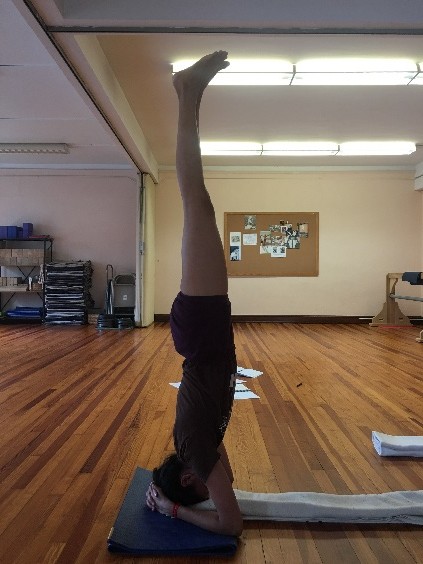
Table of Contents
Benefits:
- Strengthens the muscles of the neck & shoulder, abdomen & spine
- Helps in functioning of pituitary glands which support the endocrine gland
- Relieves headache
- Improves blood circulation of the brain. Relatively improves circulation of scalp and reduces hair loss.
- Prevents graying of hair and baldness
- Reduces stress & induces relaxation
- Improves digestion
- Reduces varicose vein
- Fights against stress, anxiety and depression because this pose presses the adrenal gland which is responsible for stress hormone.
- Provides oxygen supply to the brain
- Improves upper body strength and muscular endurance
- Tones abdominal organs
- Helps for endometriosis
- Relieves the symptoms of menopause
- Increases concentration, Improves focus
- Good for insomnia
- Improves face blood circulation & helps to glow skin
- Improves eye blood circulation and is good to improve vision
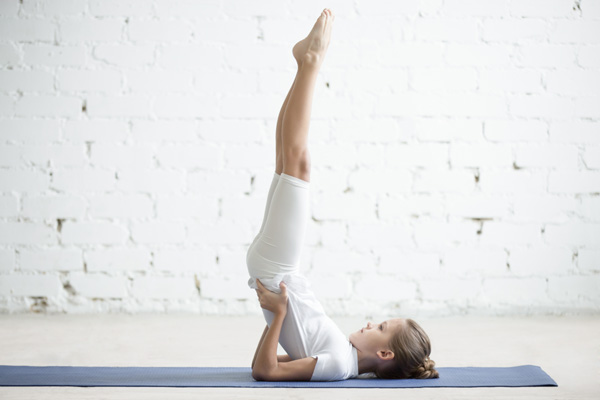
Now let’s have a look at effect of these Asanas on different chakras in the human body:-
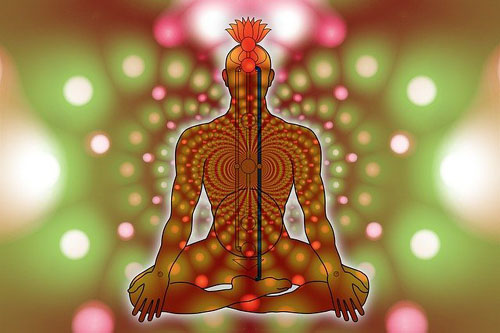
Chakra:
1) Sahasrara chakra is also known as Crown chakra.
Location: above the crown of the head
This is the bridge to the Consciousness. This is the most spiritual in nature amongst all seven chakras.
This is not just the chakra or the thing where you have to focus but we can say this is the outcome.
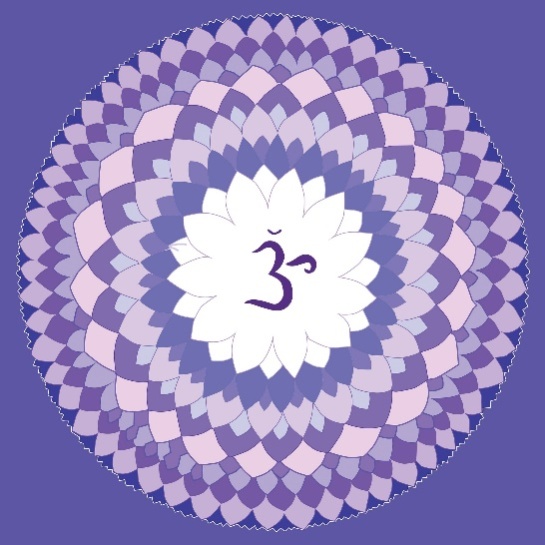
It acts as the individual center of spirit, enlightens, wisdom, consciousness & connection to higher guidance.
(There are more thigs to write about chakras but we will surely elaborate this separately)
While doing Sirsasana: -As we balance on the cranium, the asana nourishes the head with oxygen & blood which balances the Sahasrara (crown chakra). This leads to relaxing your mind and releases all the stress.
2) ADNYA CHAKRA: known as third eye chakra also known as “The seat of intuition”.
This represents vision, wisdom, intuition and mental energy
Location: center of forehead between your eyebrows.
Sirsasana and Sarvangasana helps to activate this chakra.
Dosha: Vata and pitta
Is there any Contraindication for doing this asana?
- Heart conditions
- Neck or back injury
- Sever neck or shoulder pain
- Menstruation
- High blood pressure
- Headache
- Pregnancy (during the first trimester)
- Glaucoma
- Ear infection
- Nasal blockage or sinusitis
- Myopia
- Urethral stricture
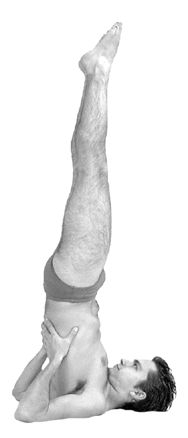
Can we do Sirsasana daily?
Yes, we can do Sirsasana daily at some specific time like morning or evening. Just make sure you are doing Sirsasana with all proper guidance and precautions.
For how much time we should do Sirsasana?
Time duration to do Sirsasana varies from person to person. It totally depends on your practice, for example if someone is new / beginner they should start with just from 30-60 seconds up to 5 min under guidance.
If you are practicing from years then it can be done for 30 min.
Does Sirsasana regrow hair?
Sirsasana helps to improve blood circulation on scalp and ultimately it helps to regrow hair and also prevents graying of hair.
Is Sirsasana good for eyes?
- As Sirsasana helps to improve the blood circulation on scalp this downward position helps to supply the blood for eye nourishment.
- You must avoid these asanasa if you are suffering from eye conditions like myopia, recent surgery with eyes like cataract, detached retina, diabetic retinopathy and glaucoma. In such delicate conditions it is better to perform these asanas under expert guidance.
Does Sirsasana help in gaining height?
Sirsasana Improves the function of Hypothalamus and this produces growth releasing hormone (GnRh). The main role of GnRh is to stimulate the pituitary gland to produce and release growth hormone into blood stream.
So defiantly children of under age 21 can gain their height with regular practice of Sirsasana.
Can we do Sirsasana during menstruation?
Always avoid Sirsasana during menstruation.
Menstruation is a natural cleaning process of a woman’s body. During Menstruation all the toxic blood starts to flow out of the body with the Apana Vayu (downward flow).
So, if you are doing Sirsasana during menstruation, there can be an imbalance in Apan Vayu leading to complications.
Can we do Sirsasana during pregnancy?
During first and second trimester, Sirsasana is not advisable as during this time fetus is not fully developed and it could be a risk for the mother and fetus. As labor (childbirth) is also related with apan Vayu.
Can I perform Sirsasana if I am a breastfeeding mother of a newborn?
Yes, Sirsasana is helpful if you are nursing mother. It will start to improve the blood circulation around the breast.
This also strengthens nervous system and stimulates hormonal glands.
What is the difference in Sirsasana and Sarvangasana?
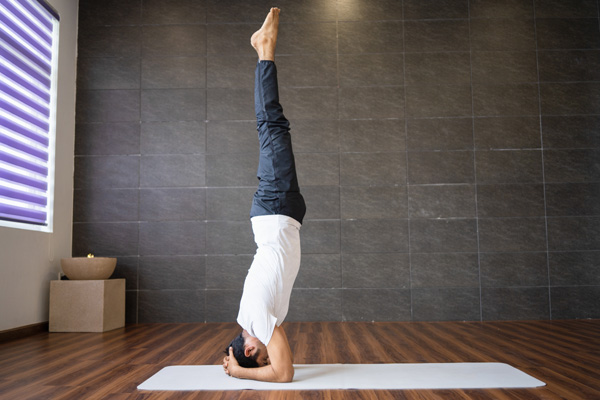
Sirsasana Pose |

Saravnagasana Pose |
Sirsasana (headstand) and Sarvangasana (shoulder stand) acts on surya mandala and Chandra mandala.
By referring to the B.K.S ayyangar guruji Sirsasana (headstand) and Sarvangasana (shoulder stand) are the father & mother or the king and the queen of the asanas
.
Salamba Sirsasana (headstand) is a heating pose because it stimulates the nervous system along with the prana. Salamba Sarvangasana (shoulder stand) is a cooling pose which pacifies the nervous system.
Here are words from In the book of “Light on Yoga” by B.K.S. Iyengar guruji.
| Sirsasana & its cycle should always be followed by Sarvangasana and its cycle. It has been observed that people who devote themselves to Sirsasana alone without doing the Sarvangasana poses are apt to lose their temper over trifling things and become irritated quickly. |
Does Sirsasana cure sinus problems?
The inversion act as a natural flushing mechanism of blocked nasal passage and sinuses. Sirsasana starts to flow the blood circulation towards face and opens the channel of the nasal passage thus helping to resolve the sinus problem.
Does Sirsasana help reduce calories in my body?
Burning calories depends on your diet and exercise. Generally, Sirsasana helps to improve the digestion and at the same time strengthens the lean muscle to replace the fat.
Is it better to perform Sirsasana with or without support of wall behind?
If you are a beginner or doing Sirsasana for the very first time, it is better to do with the support to avoid the injury.
Do people with “vertigo” should perform Sirsasana?
No, it is better to avoid Sirsasana if you are suffering with headache or vertigo.
Can Sirsasana be performed if a person is suffering from following medical conditions?
-
High blood pressure
– in inverted position like Sirsasana blood rushes to the head which can create more complications.If your blood pressure is under control with medicines, take advice from your physician and perform under observation only.
-
Hiatal hernia
– hiatal hernia is a medical condition where a portion of upper stomach pushes through a hiatus or opening, in a diaphragm muscle and into the chest.
Note: It is better to avoid Sirsasana if you have hiatal hernia.
-
Menstruation
– Menstruation is a natural cleaning process of a woman’s body. During Menstruation all the toxic blood starts to floe out through the body with the Apana Vayu (downward flow).
Always avoid Sirsasana during menstruation.
-
Ear disorders
– ears are second most complex sensory organ of perception. Headstand improves earwax blockage, hearing loss, noise exposure, tinnitus (the ringing / buzzing sound).
Take precautions if you are suffering from ear infections or watery or pus discharge form ears.
-
Palpitations
– heart palpitation is a condition where your heart is pounding or beating too fast or irregularly. This is the condition where adrenaline releases after you overexert yourself or are anxious. Do not try to do Sarvangasana if you are suffering from the palpitations. First try some calming poses like viparit karani (up-side down pose), shavasana (lying down resting pose) or Virasana (hero pose) or do some deep breathing exercises.
How to recover if I get injured during Sirsasana?
There are so many chances to get injured with Sirsasana pose if you are doing it wrongly because this needs lot of care and upper body strength to support your entire body weight with your head and neck.
If you get injured with Sirsasana take some rest and do not try to do the poses again.
- After injury make sure you don’t have any other serious issue like bone fracture or anything.
- Do some oil massage and take a steam to relieve muscle strain.
- Take some rest and do some restorative poses.
- If it’s very painful go to the doctor and do all necessary checkups.
will Sirsasana have a negative effect on my digestion system because blood flows towards the head during the pose?
When our body is inverted, blood flows towards the digestive system. It nourishes the vital organs and improves digestion.
Which asanas should I perform before Sirsasana?
Before you start Sirsasana always perform the”pre asanas” which are better for the muscles and spine of your body.
- Adho-mukh-shwanasana (अधोमुखश्वानासन)
- Prasarit padottanasana (प्रसारीत पदोत्तनासन)
- Parshwa-uttanasana (पार्श्व् उत्तानासन)
- Uttanasana (उत्तानासन)
- Adho-mukh-virasana (अधोमुखवीरासन)
- Swastikasana (स्वस्तिकासन)
- Janu-Sirsasana (जानू शीर्षासन)
- Paschimottanasana (पश्चिमोत्तानासन)
Which asanas should I perform after Sirsasana?
- Sarvangasana (सर्वांगासन)
- Halasana (हलासन)
- Setubandha – Sarvangasana (सेतुबंध – सर्वांगासन)
- Viparit karani (विपरीत करणी)
If you are following these asana sequence after Sirsasana it will help to reduce lethargy, fever, lethargy from old disease, stress-tension, helpful for children from their daily homework stress & exams, anemia, irregular menses, lethargy after delivery.
What will happen if I perform Sirsasana after eating breakfast or meal?
If we perform Sirsasana after eating food it can be harmful for the body.
Eating or drinking causes vomiting immediately after performing this pose. When we eat or drink something our body starts to convert our energy for digestion process and we can’t make the perfect poses.
That’s why doing yoga and pranayama empty stomach starts to convert energy for maintaining the poses.
Please suggest a suitable time of the day to perform Sirsasana and Sarvangasana?
We can perform yoga any time of the day, just make sure you have an empty stomach at that time or do your practice 4 hours later after the food. So that’s why morning time or evening time should be ideal to perform the asanas.
Should kids below age of 12 perform Sirsasana?
Yes, why not!
Kids are energetic, more flexible and can be comfortable into any position with ease. Yoga asanas are very helpful for channelizing their energy, to build the strength and flexibility and to develop self-control with calmness.
Will I have to change my diet if I am performing Sirsasana daily for 30 min. or more?
- Yes, to achieve the ultimate goal of yoga we need to change our lifestyle in respect with our food and behavior.
- Always eat sattvic, light, digestible and cooked food.
- Avoid junk, preserved, bakery and processed food.
How much time before or after should I eat my food if I want to practice Sirsasana?
For all yoga asanas or for pranayama you should be empty stomach minimum 2 hour prior.
Which is better headstand or handstand pose?
Most of yoga practitioners prefer to do headstand which is safer and easier. When we are doing headstand, we can get a wider base on which to balance. More of our body (head and forearms) are on the floor.
Handstand requires all pressure on two hands.
Are there any easy alternative to Sirsasana that give the same result?
If you are a beginner and trying to get in Sirsasana or somehow with some medical condition if you can’t practice Sirsasana, you can follow other asanas or take help of some props to get Sirsasana’s benefits.
- Use inversion chair or supported block headstand
- Viparit karani (leg-up the wall pose) (विपरीत करणी)
- Uttanasana (intense stretch pose) (उत्तानासन )
- Adhomukha-shwanasana (downward facing dog pose) (अधोमुखश्वानासन)
- Prasarita- padottanasana (wide- legged forward bend) (प्रसारीत पदोत्तनासन)
- Rope Sirsasana (headstand with the support of rope)
How much time duration is necessary to see positive effects of these on my health?
Yog is a union of mind, body and soul.
“Abhyasat prapyate drushti karm-siddhi prakashini “|
Abhyas (practice) makes man perfect, the more you practice the more perfectionist you are. If we follow all the yoga poses and sequence regularly and correctly no time needed to get the result.
Can I stop performing these asanas if I see negative effects on my upper body portion?
Sometimes less knowledge or wrong posture can create health issues while performing asanas. So better first to understand the asanas very well and perform it under medical supervision.
Will my heart become weak if I perform Sirsasana daily?
No, as per age blood circulation to the heart gets weak day by day. Muscles around the heart get constricted or dried out. Sirsasana improves the blood circulation of the heart, arteries get open and improve the heart beats too.
Are there any variations of Sirsasana?
-
Janu Sirsasana – जानू शीर्षासन
The name comes from the Sanskrit word janu means “knee”, “shirsha” means head and asana means “posture” or “seat”. This is also called head- to- knee forward bend.
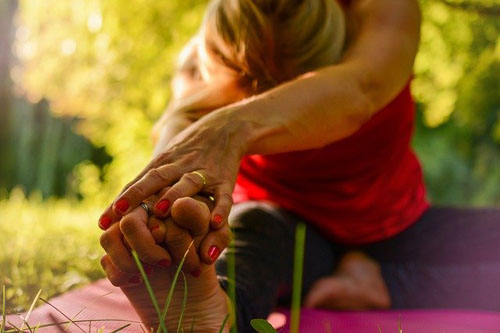
This asana strengthens spine, calms brain and relives depression, improves digestion, relieves symptom of menopause.
-
Eka pada Sirsasana – एक पाद शीर्षासन
Also known as Foot -behind-the -head pose.
Eka means one
Pad means leg.
This variation of Sirsasana is done by lowering one leg to the floor in front of the head, holding the other leg up vertically.
This is a very difficult pose, so it may not be possible to touch the floor in the beginning. Eka pad Sirsasana strengthens the neck and also the abdominal wall.
It also stretches the hamstring, spinal-cord, glutes and hips.
This is a good hip opener exercise.
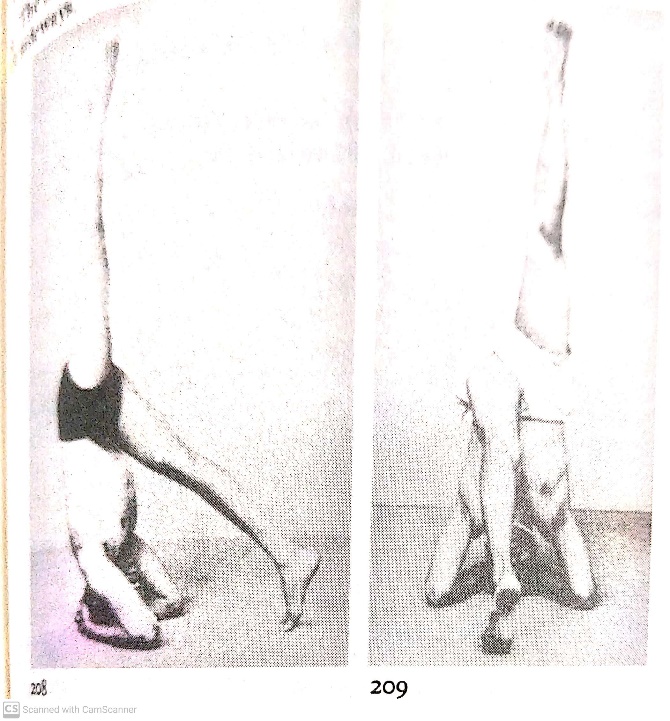
{image reference “light on yoga” of B.K.S. Iyengar guruji page no. 201.}
-
Urdhva Padmasana in Sirsasana (Urdhva Sirsasana) – ऊर्ध्व शीर्षासन
Urdhva means above or high.
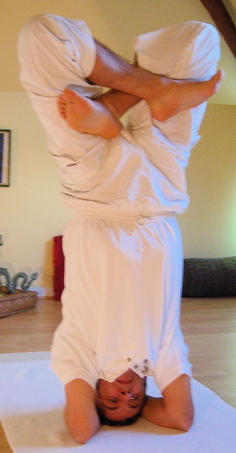
Padmasana is a lotus pose. In this pose Padmasana is done in Sirsasana.
The posture gives extra pull to the dorsal region, pelvic region and the ribs.
As per B.k.S. Iyengar guruji one can perform the pose by giving the trunk a lateral twist while doing the head stand which is called parshwa urdhva Padmasana in Sirsasana.
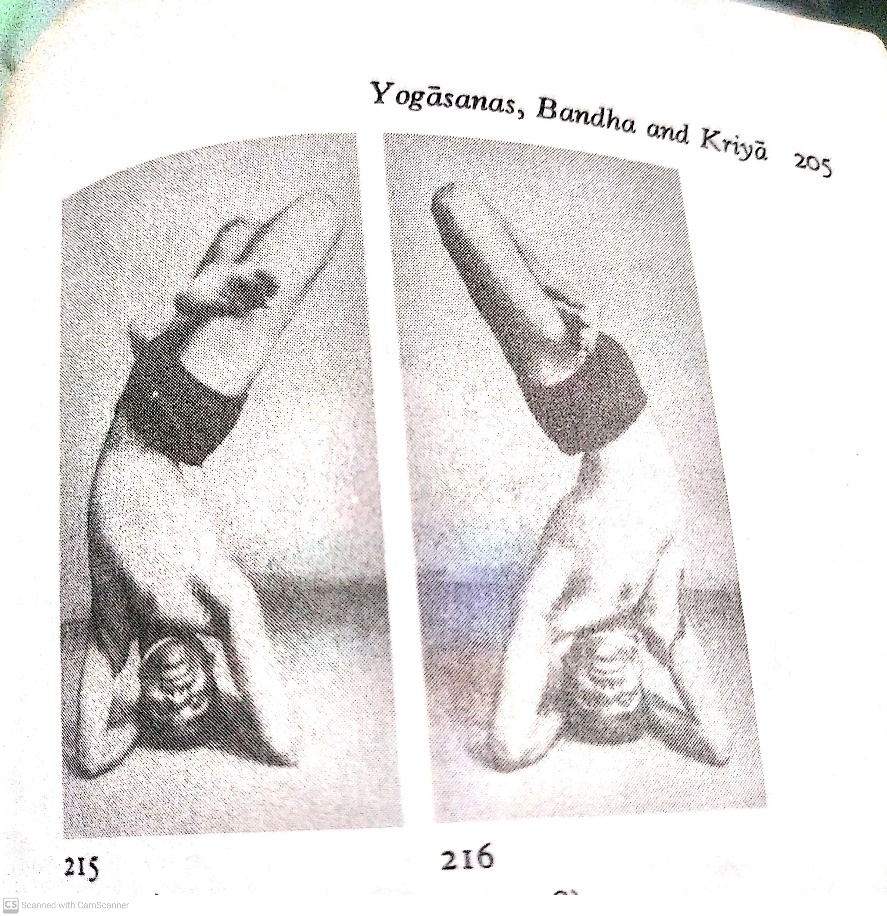
{image reference “light on yoga” of B.K.S. Iyengar guruji page no. 205.}
-
Sirsasana eagle legs (Garudasana) – गरुडासन
Also known as garuda Sirsasana.
Garuda means eagle. While performing Sirsasana legs position will be in eagle pose.
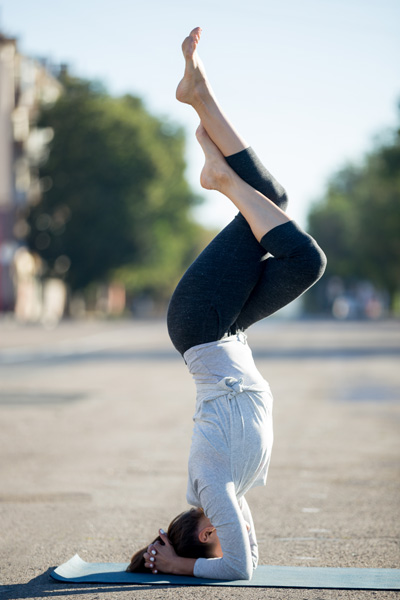
This pose helps to reduce stress, anxiety. Improves concentration, improves blood circulation. Strengthen arms, shoulders, spine, hamstring, ankles and core muscle.
-
Niralmba Sirsasana /Sarvangasana: – निरालंब शीर्षासन /सर्वांगासन
Alamba means prop, a support. While ‘Nir’ means away from or without. Therefore, niralmba means without support.
This variation of Sarvangasana is a bit harder than normal one as in it the body is not supported by the arms and the body weight and the balance are maintaining by the muscle of the neck, back, and the abdomen.
By doing this asana entire body is toned by increasing the flow of blood and elimination of toxins-forming waste matter.
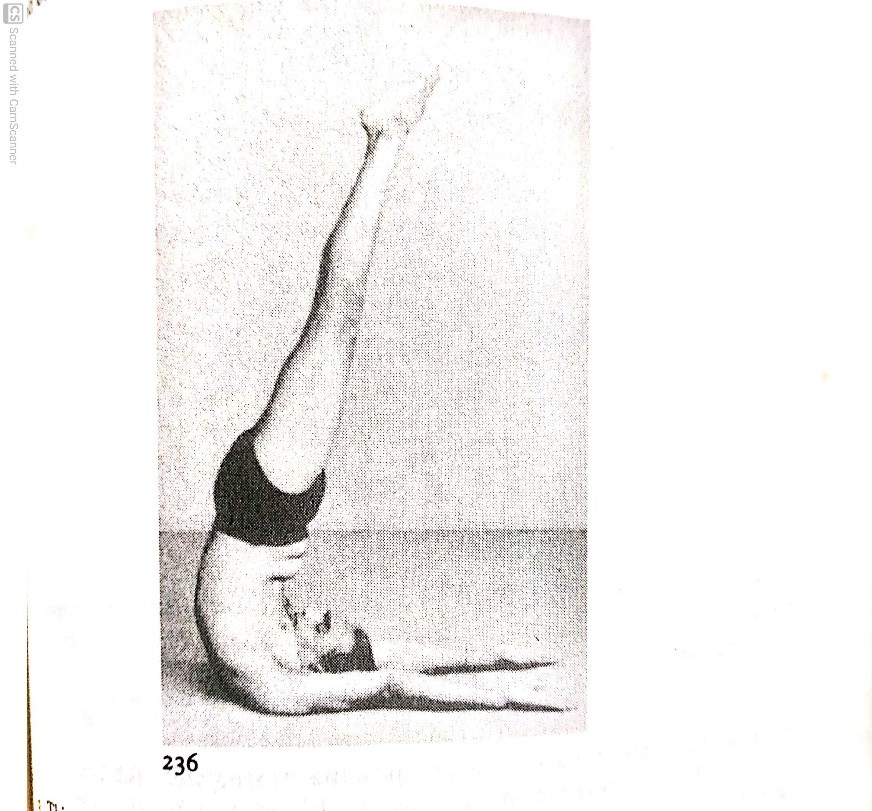
{image reference “light on yoga” of B.K.S. Iyengar guruji page no. 215.}
-
Pindasana in Sarvangasana – सर्वांगासनातील पिंडासन
Pinda means fetus or embryo. This posture resembles like the embryo of the womb. This asana stretches and strengthen the spine, and shoulder also improves digestive health.
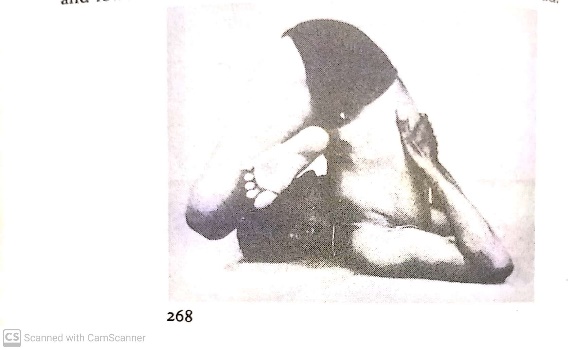 |
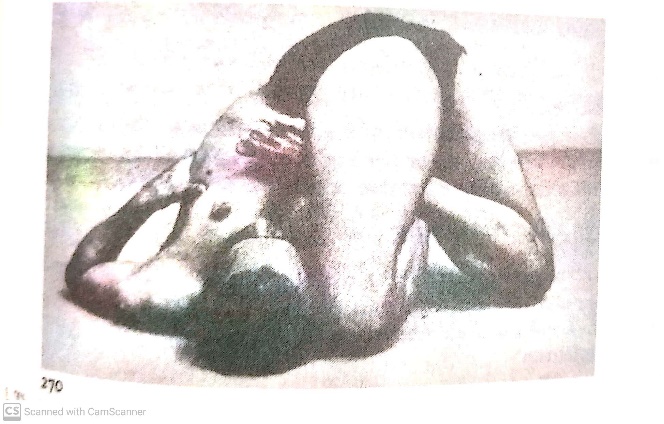 |
{image reference “light on yoga” of B.K.S. Iyengar guruji page no. 234.}
-
Rope Sirsasana
This version of Sirsasana on the ropes done in the Iyengar practice. It helps to create a passive yogic mind, good balance with the harmony and corrects spinal alignments. If you have neck or any spinal issue this Iyengar practice will surely be helpful to perform Sirsasana.
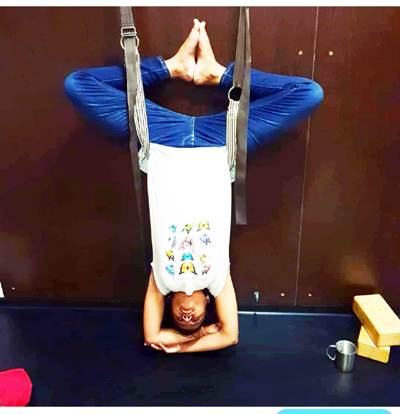
-
Sirsasana on chair
Sirsasana can be done using a chair for more challenge. Chairs are very helpful while performing Sirsasana. As it gives a good support for the shoulders. It increases nutrients and blood flow to the scalp, helpful for premature graying of hair. Strengthens deep muscle core.
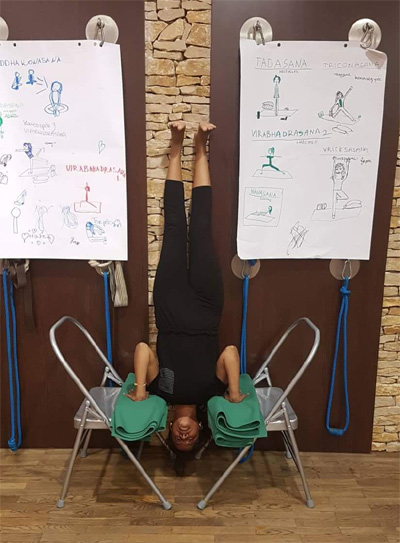
-
Sirsasana in Viparit Karani
Also known as inversion pose or legs -up -the wall pose.
Viparit – inverted
Karani – making / action
This is a simplest inverted asana and can have similar benefits of Sirsasana and Sarvangasana. Can be done with the help of wall.
In “hat yoga pradipika” this is mentioned as a mudra (gesture/pose).
The purpose of doing viparit karani is for directing of energy or kundalini upwards within the body using gravity.
What are some spiritual benefits of Sirsasana?
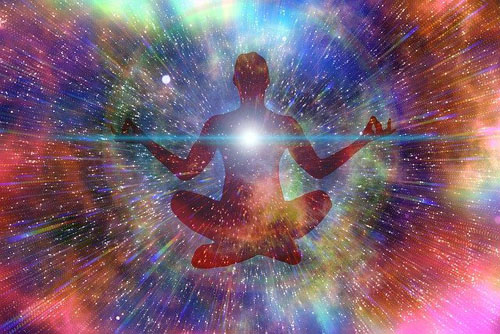
During ancient time yogis used to practice asanas to achieve their austerity. This acts against force of gravity and draws abundance of prana and blood from heart to the brain. This is very useful to keep bramhacharya (abstinence) as it makes urdhva- retas. The seminal energy is transmuted into spiritual Ojas-shakti. Which is stored in the brain as spiritual force which is use for Dhyana.
In Bhagavat Geeta lord Krishna says:
“TASMAT YOGI BHAVA” | (ch.6th -46 phrase)
sattva (harmony), rajas (mobility), tamas (inertia) these are the qualities (matter).
All these qualities stem from the brain and sometimes one quality prevails and sometime others.
The head is the center of sattvic qualities which controls discrimination, the trunk of rajasic qualities which controls passion, emotion, and action and the region below the diaphragm of tamasic qualities which control sensual pleasure like enjoyment of food, drink, thrill and pleasure of sex.
Sirsasana practice improves the sattvic qualities and makes the thoughts clear which ultimately improves the consciousness. Regular practice of Sirsasana gives proper blood supply to the pituitary and pineal gland in the brain.
This leads to natural pranayama and samadhi itself.
Image Credits:
Shirshasana
Man photo created by katemangostar – www.freepik.com
Sarvangasana
Background photo created by yanalya – www.freepik.com
People photo created by yanalya – www.freepik.com
By Marcocarvalho – Own work, CC BY 3.0,
By Joseph RENGER – Own work, CC BY-SA 3.0
Written By…
|
Dr. Pallavi Shinde is the director at Shree Vishwamukta Yog, Ayurved and Panchakarma Clinic at Pune, India. She always uses ayurvedic proprietary formulations for many chronic health diseases & many products for Skin Diseases & beauty products. She is a hardcore Researcher, Practitioner, Promoter of Ayurveda. Contact today to book an appointment. |
